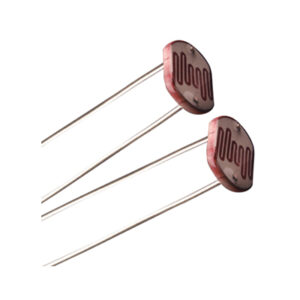By default, XBees are configured to work in transparent mode: all data received through the serial input is queued up for radio transmission and data received wireless is sent to the serial output exactly as it is received, with no additional information.
Because of this behaviour, XBees working in transparent mode have some limitations:
- To read or write the configuration of an XBee in transparent mode a special procedure for transitioning the module into command mode. Once the XBee is operating in command mode, the data coming from the serial input is interpreted as commands to set up the module.
- If an XBee needs to transmit messages to different modules, its configuration must be updated to establish a new destination. In other words, before sending a message, the XBee must go into command mode to set up the destination and then proceed with the transmission.
- An XBee operating in transparent mode cannot identify the source of a wireless message it receives. If an XBee needs to distinguish between data coming from different modules, the sending modules must include extra information known by all the XBees so it can be extracted later. In order to do this, you must define a robust protocol that includes all the information you think you need in your transmissions.
API mode provides a much easier way to perform the actions listed above:
- There are different frames for different purposes (configuration, communication, etc.). This fact allows an XBee to be configured without entering command mode.
- This mode facilitates transmission to multiple modules since the data destination is included as part of the API frame’s organized structure.
- Since the API frame includes the source of the message, API mode makes it easy to identify where data is coming from.
The main advantages of this operating mode are:
- Configure local and remote XBees in the network.
- Manage data transmission to one or multiple destinations.
- Identify the source address of each received packet.
- Receive success/failure status of each transmitted packet.
- Obtain the signal strength of any received packet.
- Advanced network management and diagnosis.
- Advanced features such as remote firmware update, ZDO, ZCL, etc.
Configure your local Xbee
- In this example, you will learn how to read the Node Identifier (NI) of your local XBee module using the XCTU console. To do this, you will create an AT Command frame to read the NI parameter, send it to the XBee, and analyse the response.
- To add your XBee(s),click the “Add device” icon –
 – in the upper-left part of the window. That will prompt this screen to show up:
– in the upper-left part of the window. That will prompt this screen to show up:
- Select your communication port. If you’re using a USB XBee board. If you’re using a Serial Explorer instead, pick the “Communications Port” option. If the Serial Explorer is not showing up, make sure the switch on-board is set to “On”!
- This window also allows you to specify more specific serial characteristics like baud rate, data bits, and stop bits. Assuming this is the first time you’ve used your XBee, you can leave those settings alone. So make sure those values look just as they do in the image above and click Finish.
- A “Discovering radio modules…” window will briefly scroll by, after which you should be presented with the original window, but with an addition to the “Radio Modules” section on the left.
- Click that new module, and wait a few seconds as X-CTU reads the configuration settings of your XBee. You should then be presented with the entire configuration of your XBee.

- As you can see by scrolling down the right half, there area lot of configuration settings available. We’ll get to some of those later. For now, though, verify that the configurable settings visible in the screenshot above match those of your Xbee.
XBee coordinator
- ID – PAN ID – any number between 0-65535
- DH – Destination Address High – 0
- DL – Destination Address Low – 1
- AP – API Enable – 2
- EE – Encryption Enable – 1 (for implementing secured network)
XBee router
- ID – PAN ID – Same as the coordinator
- DH – Destination Address High – 0
- DL – Destination Address Low – 0
- AP – API Enable – 2
- EE – Encryption Enable – 1 (for implementing secured network)
- Go to console window click on close the serial connection with serial window

- Then click on add frames list

- Give a name to frame

- Click on frame generate tool

- Frame type should be transmit request 16 bit address and type RF data to be sent and ok
- Now click on send selected frame



- Go to the receiver side you can see the data being received on frame details
- For more information please visit: tenettech.com
- For technical query please send an e-mail: info@tenettech.com








